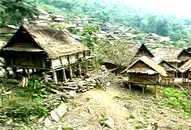|
|
|
Servant Cake Baptism Cake Gifting Essay Seeking God Cost Good Plan |
Hay Fever Hay fever is the most common allergic illness, and the number of people with the familiar symptoms of sneezing, runny nose and sore eyes is increasing. Not all suffers are actually allergic to hay! The first culprit of the year is tree pollen, in April and May. Grass pollen follows in June to early August. Finally mould spores can cause a problem from July to early September. Hay fever is cause by pollen grains, which can travel hundreds of miles in the upper atmosphere, ‘Poor air quality’ results from wind-free stagnant air leaving large amounts of pollen to accumulate. Symptoms that last all year round are usually due to the house dust mite. Treatment available from the chemist includes decongestants to use initially, then antihistamines (some of which are non-sedative). Prescription-only treatments include steroid sprays for nasal systems and eye drops for watery eyes. Where all these treatments have failed, a slow release steroid injection is available, which usually lasts six weeks. However this is not used as a first resort. For more information speak to your local chemist or doctor for advice. |

|
|
'THE JUST SHALL LIVE BY FAITH' Hab. 2:4 |
 |
More from By Faith Jesus the servant Go Valentines day and kisses Go Evangelism on the Internet Go Seeking God Go Inheritance Go New miracle Go Match the headlines with the person. Go |
Spiritual Warning Signals |
